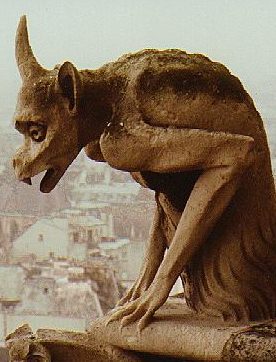I was lucky enough to visit Notre Dame cathedral as a child. It was August, the time when Parisians traditionally took their own vacations, and the city was quieter than it normally was. I went with my mom and dad. I remember it being shadowy and cool inside, the noises muffled. It seemed impossibly high. The summer sun blazed through the stained glass windows, so bright I could barely tell what colors they were made of. My dad wandered around, snapping pictures on a 35mm reflex camera — he was a photographer. Perhaps, being a jokester, he told me to look out for the hunchback.
That version of the cathedral is gone now.
It’s a disaster, of course, the fire eating through the roof and destroying the spire. But the spire had never been part of the original design. Neither were the iconic flying buttresses. And many cathedrals have survived the loss of their roofs and spires, even their towers. Fire is the most common culprit, but windstorms as well, and sometimes the failure of the materials themselves when the weight of the structure strains them over time.
Additions too change a cathedral’s original integrity. Chapels may be added to appease some noble family. Or the building changes religions, Hagia Sophia adding minarets (and very attractive ones) when it became a mosque.
The point is, churches are of man, of humankind, and not static objects frozen in time. They change and grow as humans themselves do. Notre Dame will recover, as an individual, family, or community does. It will endure.

For a different kind of disaster that befalls a cathedral, here’s the short story “Petra” by SF author Greg Bear. He most likely had Notre Dame and its famous gargoyles in mind when he wrote it.
